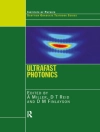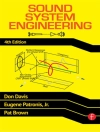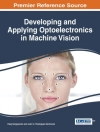This book systematically introduces the powder bed laser melting technology and its application and summarizes the author’s team’s experience in scientific research, engineering development, and data accumulation in recent 15 years. It includes in-depth theoretical analysis and a lot of engineering experience in equipment debugging, process development, and material testing. The book takes the powder bed laser melting technology as the object and divides the content into 15 chapters. It is used as technical learning materials for researchers and engineering development personnel engaged in metal 3D printing.
Jadual kandungan
Chapter 1. Introduction to laser powder bed fusion additive manufacturing.- Chapter 2. Laser powder bed fusion equipment and operation procedures.- Chapter 3. Factors affecting the quality of laser powder bed fusion parts.- Chapter 4. Research on the single-pass, multi-pass, and multi-layer manufacturing process.- Chapter 5. Unstable factors and defects in laser powder bed fusion process.- Chapter 6. Mechanism of spatter formation in laser powder bed fusion process and subsequent influence on mechanical properties.- Chapter 7. Research on surface characteristics and roughness of laser powder bed fusion parts.- Chapter 8. Crystallography feature and microstructure characterization in laser powder bed fusion parts.- Chapter 9. Research progress on quality-feedback detection technology in laser powder bed fusion process.- Chapter 10. Research on the manufacturing of typical geometric features.- Chapter 11. Influence of the delay of laser and galvanometer on manufacturing quality.- Chapter12. Scanning strategy and its effect on stress in laser powder bed fusion.- Chapter 13. Typical materials used in laser powder bed fusion.- Chapter 14. Frontier and development of laser powder bed fusion technology.- Chapter 15. Powder pollution and safety protection in laser powder bed fusion process estimated.
Mengenai Pengarang
Di Wang is a professor/doctoral supervisor of South China University of Technology, China, and a visiting scholar of Birmingham University, UK. And he is currently a director/general manager of Laseradd Technology (Guangzhou) Co., Ltd., a member of the National Committee for Standardization of Special Processing Equipment, the executive/co-chairman of the National Forum for Additional Materials Manufacturing for Young Scholars, the secretary-general of the Design Committee of the Branch of Additional Materials Manufacturing of China Mechanical Engineering Society, the vice director of the Guangdong Metal Addition Engineering Technology Center, and the first young member of the Laser Application Branch of China Optical and Electronics Industry Association, Young Editorial Committee of Journal of Materials Engineering and Journal of Aeronautical Materials, High-level Talents of Guangdong Province High-level Special Program, Guangzhou Pearl River Science and Technology Star, Young Reserve Talents of Liwan District.
Yongqiang Yang is a professor and a doctoral supervisor of South China University of Technology, China. In 1982, 1987, and 1993, he successively obtained bachelor’s, master’s, and doctor’s degrees in the Department of Mechanical Science, Tianjin University, China. Currently, he is the executive director of China Mechanical Engineering Society Supplementary Manufacturing Branch, the director of Supplementary Manufacturing Design Committee, the vice president of China 3D Printing Technology Alliance, the president of Guangdong Supplementary Manufacturing (3D Printing) Association, the director of Guangdong Metal Supplementary Manufacturing Engineering Research Center, the director of Guangdong 3D Printing Standardization Committee, the director of Guangdong Laser Industry Association, a senior member of American Laser Association (LIA), etc.
Yang Liu is an associate professor in Department of Mechanical Engineering, Ningbo University, China. He received his Ph.D. from School of Mechanical and Automotive Engineering, South China University of Technology in 2015. His research interests include laser metal additive manufacturing process, dynamic mechanical properties of the 3D-printed products, crystal plasticity finite element (CPFE) method, etc.
Yuchao Bai is an assistant professor/master supervisor in School of Mechanical Engineering and Automation, Harbin Institute of Technology, Shenzhen, Guangdong, China. He received his Ph D degree in mechanical engineering from South China University of Technology in 2018. He was a Senior Research Fellow at the Department of Mechanical Engineering, National University of Singapore, Singapore. He has been engaged in the development of additive manufacturing technology for more than 10 years and is the topic editor of the journal Coatings, the author of more than 50 peer-reviewed scientific papers, the Youth Editor of CJME:AMF and Rare Metal Mat. Eng. and was listed in World’s Top 2% Scientist Ranking by Stanford University in 2022. He has co-authored 2 books and yielded a number of patents, where 52 were successfully patented by China and Japan. His main research interests include metal additive manufacturing and post-processing, ultra-precision machining, and hybrid manufacturing.
Chaolin Tan is a Senior Scientist at the Singapore Institute of Manufacturing Technology (SIMTech), A*STAR. He received his Ph D degree in materials processing engineering in June 2019. He was awarded as an Honorary Research Fellow of the University of Birmingham and Guangzhou Young Talent Researcher in 2019. He was elected as the Fellow of International Association of Advanced Materials (IAAM) and listed as World’s Top 2% Scientist Ranking by Stanford University in 2022. His research experience in Additive Manufacturing (3D printing), has been over 9 years and contributed more than 60 SCI papers, including more than 30SCI journal papers as the lead author. He is on the Editorial Board of Int. J. Mach. Tools Manuf. and Youth Editor of Int. J. Extreme Manuf. and J. Mater. Sci. Technol.












